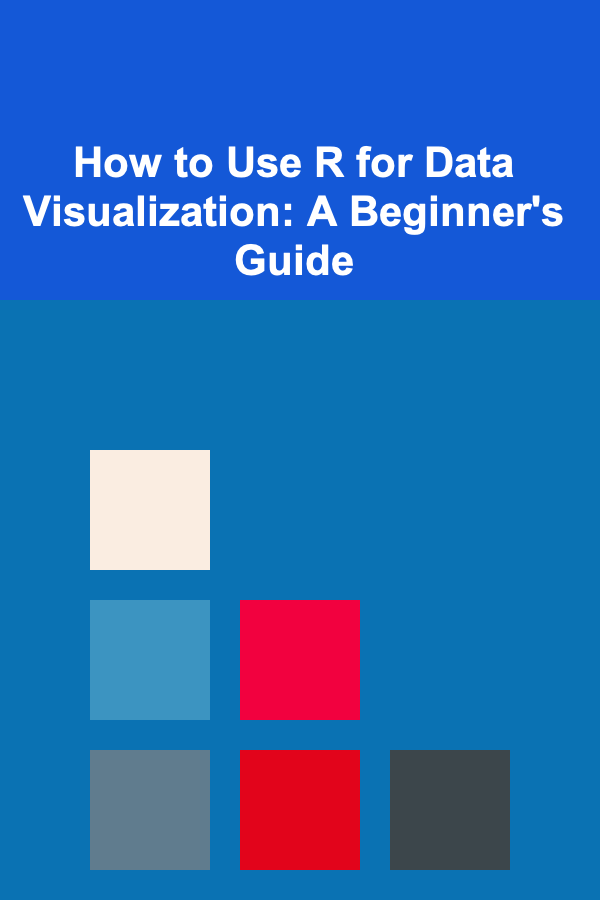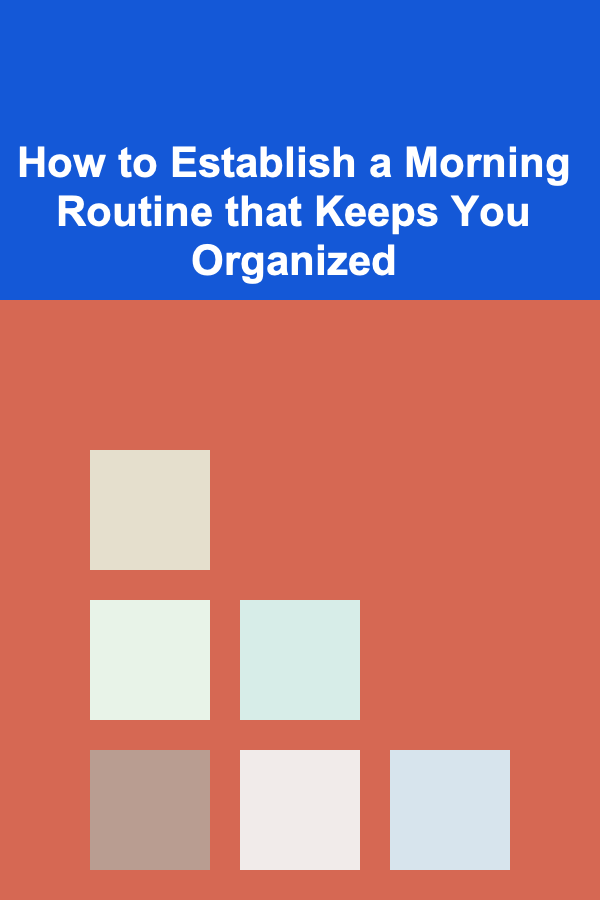
How to Use R for Data Visualization: A Beginner's Guide
ebook include PDF & Audio bundle (Micro Guide)
$12.99$7.99
Limited Time Offer! Order within the next:

Data visualization is one of the most powerful techniques in the data science toolkit. It allows us to present complex datasets in a clear, interpretable, and engaging way, helping us uncover patterns, trends, and insights that would otherwise be difficult to grasp. R, a powerful language for statistical computing and data analysis, offers numerous packages and functions designed specifically for creating visualizations. This article will provide a comprehensive beginner's guide to using R for data visualization, covering essential concepts, tools, and techniques.
Why Choose R for Data Visualization?
Before diving into the practical aspects, it's important to understand why R is such a popular choice for data visualization. R has several advantages that make it an ideal tool for creating visualizations:
- Comprehensive Libraries : R comes with a rich ecosystem of visualization packages, such as
ggplot2,plotly,lattice, andshiny. These libraries provide flexible and customizable ways to create a variety of visualizations. - Statistical Integration: Since R is built for statistical analysis, its visualization tools integrate seamlessly with its statistical functions, making it easy to create plots directly from analysis results.
- Wide Community Support: R has a large and active community of users, which means a wealth of tutorials, documentation, and forums are available to help troubleshoot any issues you encounter.
Getting Started with R
Before you can start visualizing data in R, you need to set up your environment. The easiest way to do this is by installing R and an integrated development environment (IDE) called RStudio. Here are the basic steps:
2.1 Install R and RStudio
- Download R from the official website: https://cran.r-project.org/.
- Install RStudio from https://posit.co/download/rstudio-desktop/.
- Open RStudio and you are ready to begin!
2.2 Installing Required Packages
R packages extend the functionality of R. For data visualization, some of the most essential packages include ggplot2, plotly, lattice, and shiny. You can install them by using the install.packages() function in the console:
install.packages("plotly")
install.packages("lattice")
Once the packages are installed, you can load them into your session using the library() function:
library(plotly)
Introduction to ggplot2
ggplot2 is arguably the most popular and powerful data visualization package in R. It is based on the Grammar of Graphics concept, which means that it provides a structured approach to building plots by combining different elements (like data, aesthetic mappings, geometric objects, and statistics).
3.1 Basic Syntax of ggplot2
The basic syntax for creating a plot with ggplot2 looks like this:
geom_point()
In this example:
ggplot()is the function that initializes the plot.dataspecifies the dataset.aes()stands for "aesthetic mapping," where you map variables in the dataset to plot aesthetics like the x and y axes.geom_point()is the geometric object used for creating a scatter plot.
3.2 Creating Basic Plots
3.2.1 Scatter Plot
A scatter plot is one of the most basic types of visualizations. It's useful for showing the relationship between two continuous variables.
geom_point() +
labs(title = "Scatter Plot of Miles per Gallon vs Horsepower",
x = "Miles per Gallon",
y = "Horsepower")
3.2.2 Bar Plot
Bar plots are useful for comparing categorical data.
geom_bar() +
labs(title = "Number of Cars per Cylinder",
x = "Number of Cylinders",
y = "Count")
3.2.3 Histogram
Histograms help visualize the distribution of a continuous variable.
geom_histogram(binwidth = 2, fill = "blue", color = "black") +
labs(title = "Distribution of Miles per Gallon",
x = "Miles per Gallon",
y = "Frequency")
Enhancing Visualizations with ggplot2
While ggplot2 allows for quick, effective visualizations, you can further enhance the aesthetics and functionality of your plots.
4.1 Customizing Aesthetics
You can modify various visual elements like colors, themes, and labels.
4.1.1 Changing Colors
You can set the color of points, bars, or lines using the color or fill arguments.
geom_point(color = "red") +
labs(title = "Scatter Plot with Red Points")
4.1.2 Themes
ggplot2 comes with several pre-defined themes that control the overall look of your plot.
geom_point() +
theme_minimal() +
labs(title = "Scatter Plot with Minimal Theme")
4.2 Faceting
Faceting allows you to create subplots based on a categorical variable. This can be useful for comparing different groups within the data.
geom_point() +
facet_wrap(~ cyl) +
labs(title = "Scatter Plot Faceted by Cylinder Count")
Interactive Visualizations with Plotly
While ggplot2 is great for static visualizations, you might want to create interactive plots, especially for web applications or dashboards. plotly is a powerful R package for creating interactive plots.
5.1 Basic Interactive Plot
You can create an interactive version of a ggplot2 plot by passing it to plotly's ggplotly() function.
p <- ggplot(data = mtcars, aes(x = mpg, y = hp)) +
geom_point()
ggplotly(p)
5.2 Interactive Bar Plot
Interactive bar plots can be generated using plot_ly(), which provides a more direct interface to create interactive visualizations.
layout(title = "Bar Plot of Cylinder Counts")
Creating Complex Visualizations
In real-world data analysis, you often need more complex visualizations that combine multiple types of plots and data layers. Here are a few advanced techniques you can use:
6.1 Line Plot with Multiple Lines
You can combine multiple lines into a single plot to visualize different trends over the same axis.
geom_line() +
labs(title = "Line Plot with Multiple Lines by Cylinder Count")
6.2 Heatmap
Heatmaps are excellent for visualizing matrix-like data, especially correlations between variables.
ggplot(melt(cor_matrix), aes(Var1, Var2, fill = value)) +
geom_tile() +
scale_fill_gradient2(low = "blue", high = "red") +
labs(title = "Heatmap of Correlation Matrix")
Using Shiny for Dynamic Visualizations
Shiny is an R package that allows you to build interactive web applications directly from R. This can be especially useful when you want to create dynamic, user-interactive dashboards that feature data visualizations.
7.1 Basic Shiny Application
A simple Shiny application might look like this:
ui <- fluidPage(
plotOutput("scatterPlot")
)
server <- function(input, output) {
output$scatterPlot <- renderPlot({
ggplot(data = mtcars, aes(x = mpg, y = hp)) +
geom_point()
})
}
shinyApp(ui = ui, server = server)
This creates a basic web application that displays a scatter plot of the mtcars dataset.
Conclusion
R is a powerful and flexible tool for data visualization, with a rich ecosystem of packages like ggplot2, plotly, lattice, and shiny. Whether you are a beginner or an experienced data scientist, R allows you to create stunning visualizations that can uncover insights, tell stories, and present data in a compelling way.
By mastering the basics of ggplot2, learning how to enhance your plots with customization options, and exploring interactive features with plotly and shiny, you will be able to effectively communicate your findings through data visualization.
Data visualization is a skill that improves with practice. So, keep experimenting with different datasets and visualization types, and soon you'll be able to create compelling visual stories that make an impact. Happy visualizing!
Reading More From Our Other Websites
- [Home Storage Solution 101] How to Maximize Space in a Small Bedroom with Storage Hacks
- [Personal Investment 101] How to Use Dollar-Cost Averaging in Cryptocurrency Investments
- [Soap Making Tip 101] From Melt-and-Pour to Cold-Process: Which Soap-Making Method Is Right for You?
- [Personal Finance Management 101] How to Avoid Lifestyle Inflation and Keep Your Finances in Check
- [Toy Making Tip 101] Blueprint to Play: Crafting Toys with a Detailed Plan
- [Organization Tip 101] How to Organize Your Travel Memories with Scrapbooking
- [Organization Tip 101] How to Organize Journals and Reflection Tools Effectively
- [Organization Tip 101] How to Organize Your Bookshelf for Quick Access to Resources
- [Organization Tip 101] How to Maintain an Organized Pet Supply Closet
- [Personal Financial Planning 101] How to Start a Side Hustle and Manage Finances Effectively

How to Establish a Morning Routine that Keeps You Organized
Read More
How to Handle Late Rent Payments for Rental Properties
Read More
How to Identify Signs That Your Building Envelope Needs Maintenance
Read More
How to Improve Your Credit Score in 6 Months
Read More
Mastering Graphic Design: Essential Techniques for the Modern Graphic Design Specialist
Read More
10 Tips for Sustainable Dining Out: A Checklist
Read MoreOther Products

How to Establish a Morning Routine that Keeps You Organized
Read More
How to Handle Late Rent Payments for Rental Properties
Read More
How to Identify Signs That Your Building Envelope Needs Maintenance
Read More
How to Improve Your Credit Score in 6 Months
Read More
Mastering Graphic Design: Essential Techniques for the Modern Graphic Design Specialist
Read More